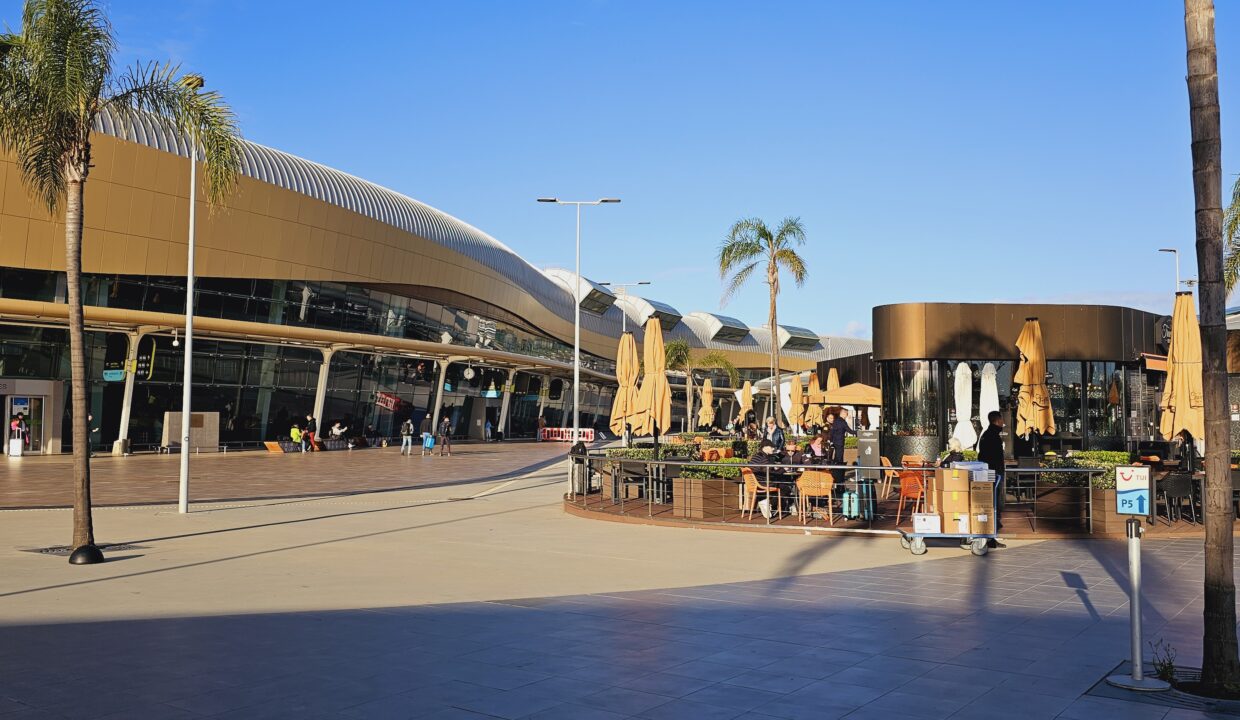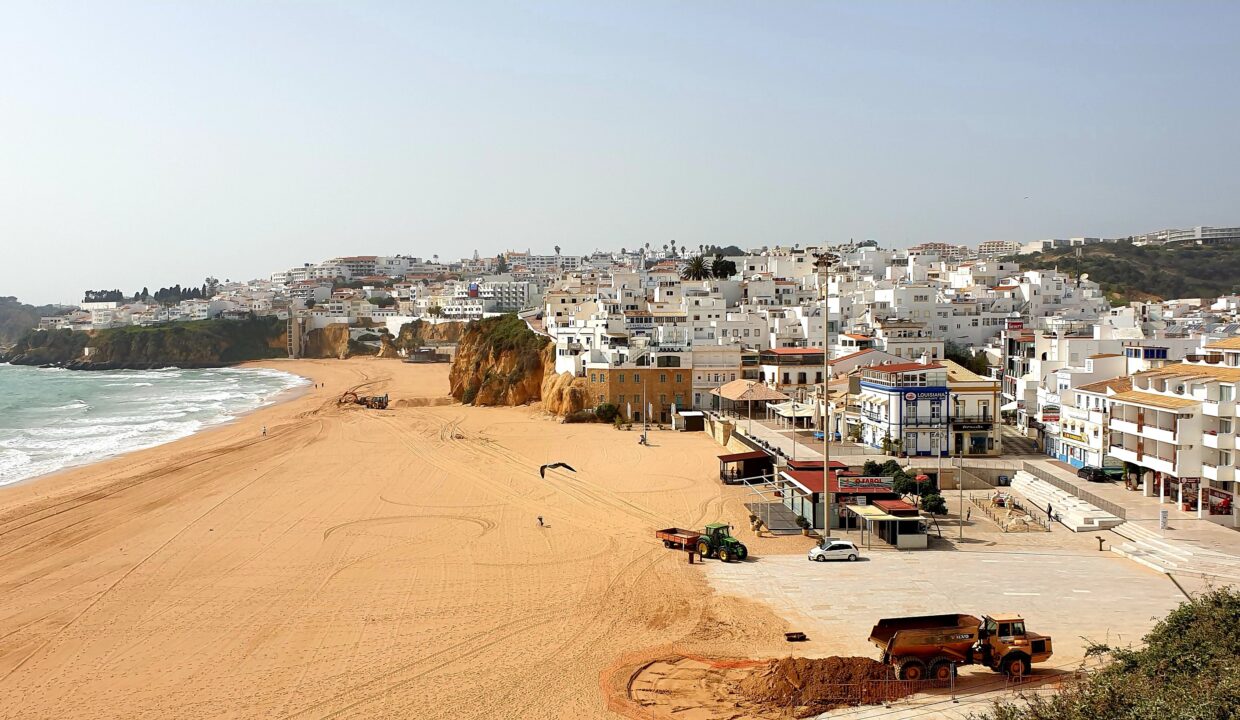Top Most Historical Fortresses in Algarve
The Algarves Most Historical Fortresses
The Fortresses of the Algarve hide many a historical secret with most dating back to dates before christ. Each one has its own story behind the exterior walls. Some have fallen into disrepair over the years but even they have a story to tell.
Living or looking to live in the Algarve can lead one on a road of discovery not least with the castles and fortresses to be explored. Why not take up the trail and find the secrets they hold, it can be quite an enthralling journey.
Cape St Vincent Fortress – Farol do Cabo de São Vicente
At the most westerly point of the Algarve is the Cape St Vincent Fortress. During the early times, it was used for religious purposes. Housing both a convent and a church.
A lighthouse has existed on the cape since 1520, in a special tower constructed on the site of the old convent.
Between 1521 and 1557 a tower and fortress were ordered to be constructed by King D. John III to defend against coastal attacks from invading armies.
Unfortunately, in 1587, the tower was destroyed by the English privateer Sir Francis Drake and only returned to operation 20 years later, following its restoration on the orders of King Phillip II.
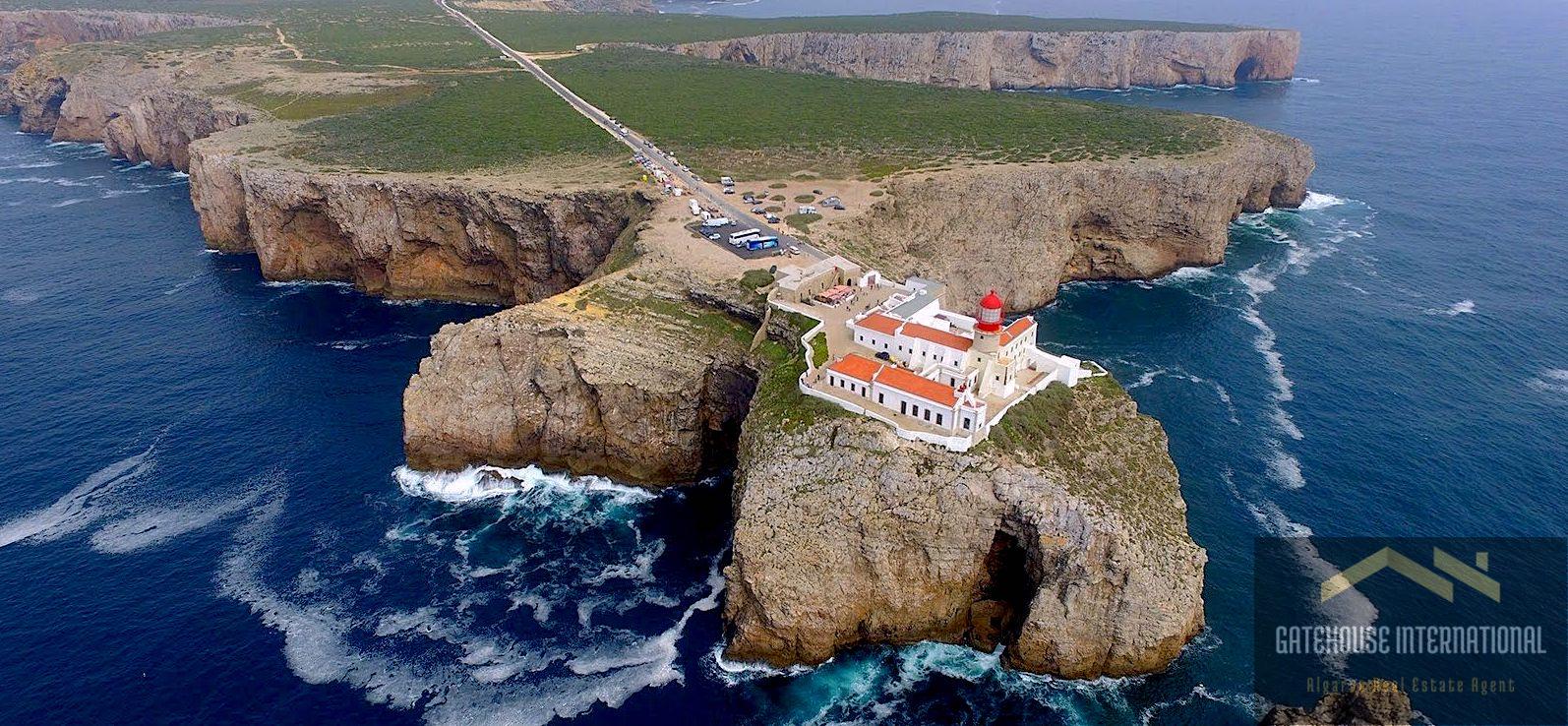
Fortress of Cacela – Fortaleza de Cacela
The picturesque village of Cacela Velha, overlooking the Ria Formosa, was home to people of various origins over the centuries.
A castle was built there in the Muslim period, however, the current structure as it stands was rebuilt after the 1755 earthquake.
Located in the Nature Park of Ria Formosa and Rede Natura 2000 sectorial plan it was included in the Special Protection Zone of Cacela Velha and designated as a Community Site of Interest.
Fortress of Santa Catarina – Fortaleza de Santa Catarina
Found in Portimão, the Fortress of Santa Catarina is blessed with a magnificent view over the mouth of the River Arade.
The Fort also known as The Fort of Santa Catarina de Ribamar is a medieval fort situated in the civil parish of Portimão, in the Algarve.
The stronghold was considered one of the last Philippine military projects in the Algarve, erected to defend the Iberian peninsula from pirates, privateers and military invasions.
Sagres Fortress – Fortaleza de Sagres
The Sagres Fortress has considerable historic and symbolic value. This area was systematically attacked by pirates and privately commissioned ships, such as the famous Englishman Sir Francis Drake.
Sagres have always been important for sailors as it offers shelter for ships before attempting a dangerous voyage around Cape St. Vincent. Ships could anchor in Belixe Bay, between Sagres Point and Cape st Vincent.
Facing the danger of being blown onto the ragged rocks of the cape, most captains would wait in the bay until favourable winds allowed them to continue.
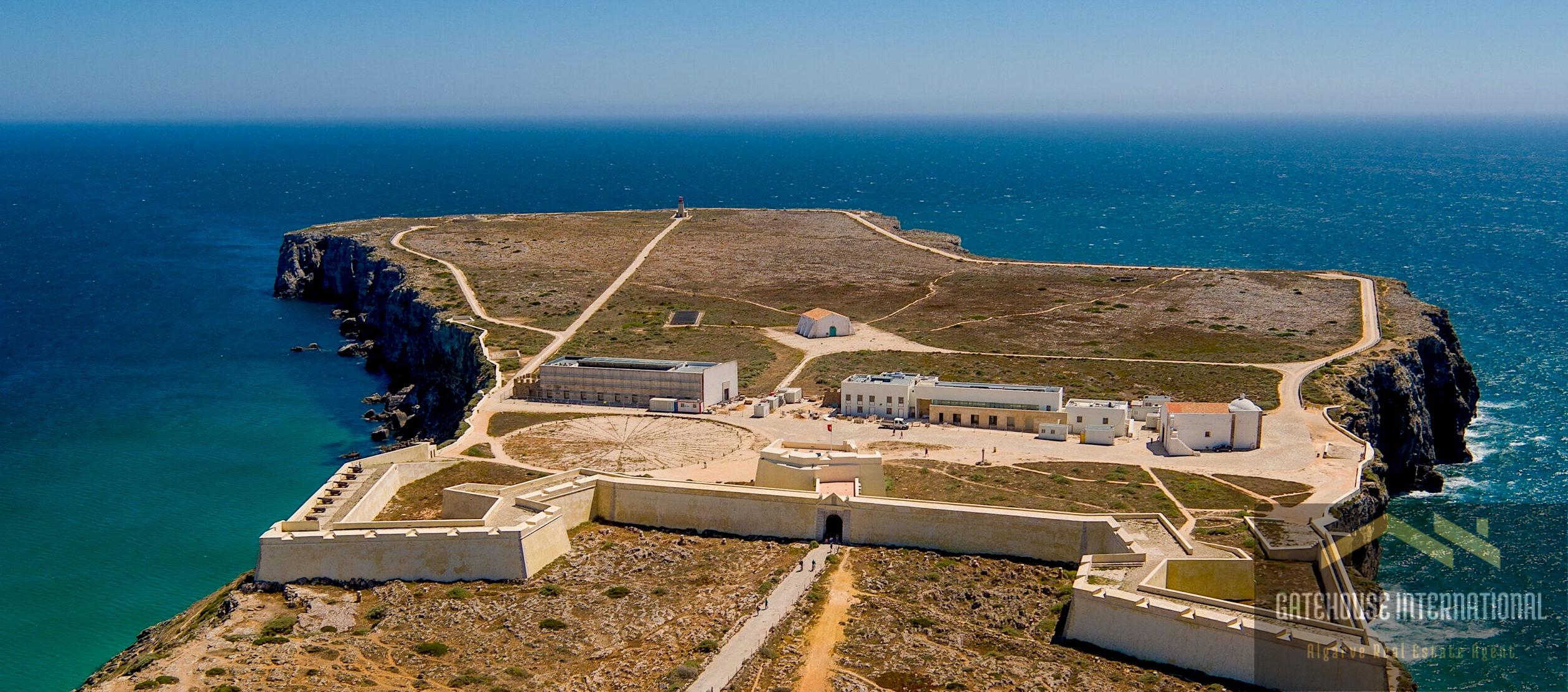
Faro Castle Walls – Muralhas de Faro
The Faro city walls surround the old town known as Vila Adentro and date back to around 2000 BC.
The Muralhas de Faro which forms a broken ring around Faro’s Old Town has an interesting history, reflecting the town’s coloured past.
The Romans named the town Ossonoba and made their presence felt. They built a wall around the area which would have contained various important buildings.
Between the ninth and the eleventh centuries, the Arabs extended the construction, which includes octagonal towers built by the Byzantines.
Fort of São João do Arade – Castelo de São João do Arade
The Fort of São João do Arade found in Ferragudo, occupies a strategic site across the river from Portimao, and was used as a military base until the late 19th century.
The first fortification on the site was the construction of a watch tower which was erected during the reign of King John II of Portugal.
In 1520 following the building of a settlement in Ferragudo, it is thought that the castle was surrounded by a defensive wall which was built on the older existing walls and gave rise to its original name Castle of Arade.
It has since been converted into a private residence by a Portuguese businessman so viewing is from the outside only.
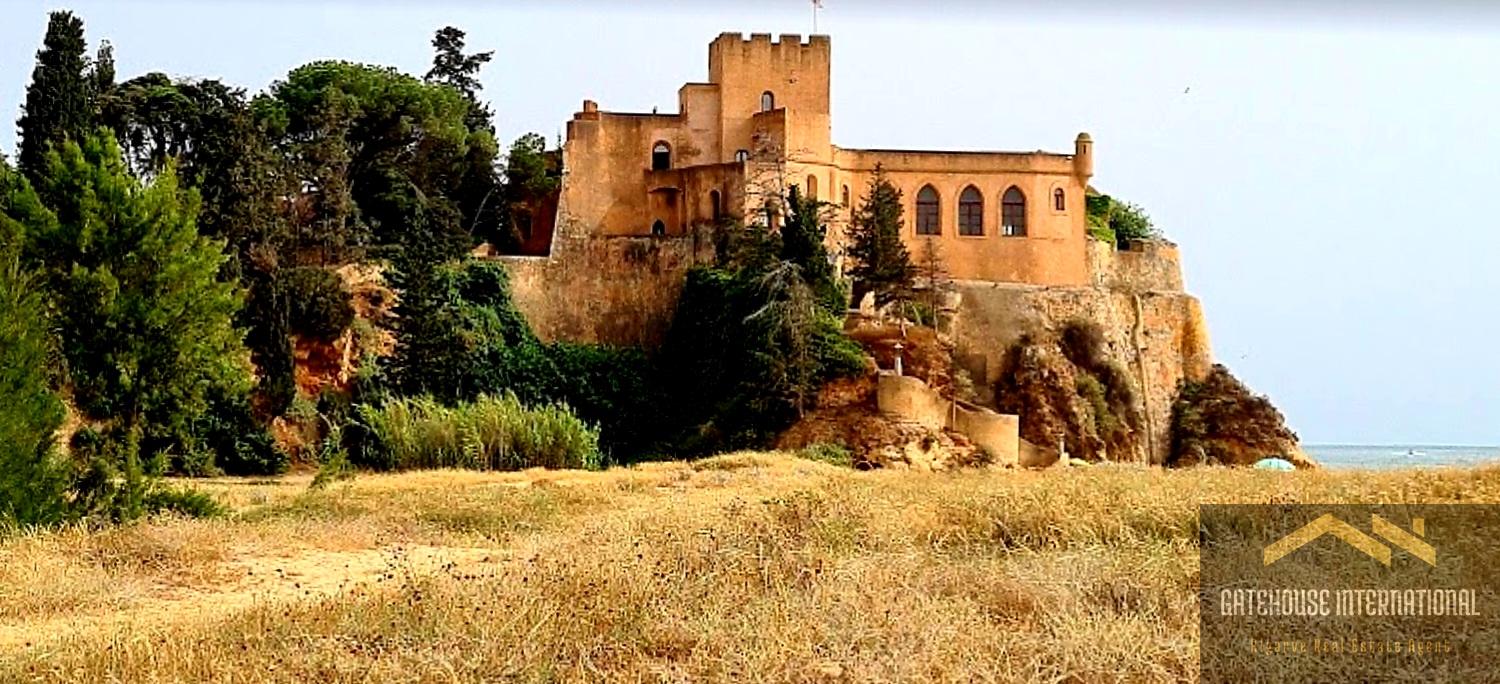
Fort of Saint Anthony – Armação de Pêra Fortress
Santo António da Pedra da Galé Fort, also known as Armação de Pêra Fortress, is located at the Chapel of Saint Anthony.
Erected in the third quarter of the 17th century by Captain João Galego, the Santo António da Pedra da Galé Fortress was intended to provide advanced protection against corsair attacks to the towns of Alcantarilha and Pêra, as well as to the tuna traps of tuna being thrown into the bay.
The fortification, with a polygonal plan (39 m wide and 40 m long), built in medium-sized limestone blocks, barely evened and connected by lime and sand mortar, was protected by two walls thrown into the ground, now missing.
In the form of an arch, they adorned the entrance, a portico with a perfect round arch, crowned with the arms of Portugal, with the chronology of 1667. A defence that would be complemented by a hypothetical moat that would be crossed through a drawbridge.
Inside the enclosure, where there was an artillery platform facing the sea, a chapel was built, also by João Galego. Devastated by the tsunami that followed the 1755 earthquake and rebuilt soon after, it has a single nave and a rectangular plan, with a straight lintel portal and a simple bell tower. Consecrated to San Antonio, it is also known as Our Lady of the Afflicted.
Forte de Almádena – Fort of the River Mouth
The Fort of Almádena, also known as the Fort of the River Mouth, is located between the towns of Salema and Burgau, in the Algarve region of Portugal. It was constructed in 1632. Damaged by the 1755 earthquake, it was abandoned in 1849.
The Fort is now in ruins but the main entrance and one of the walls of the bastions are still intact. The main entrance is surrounded by a moat with a passage. Inside, the remains of quadrangular, vaulted buildings topped by terraces are visible.
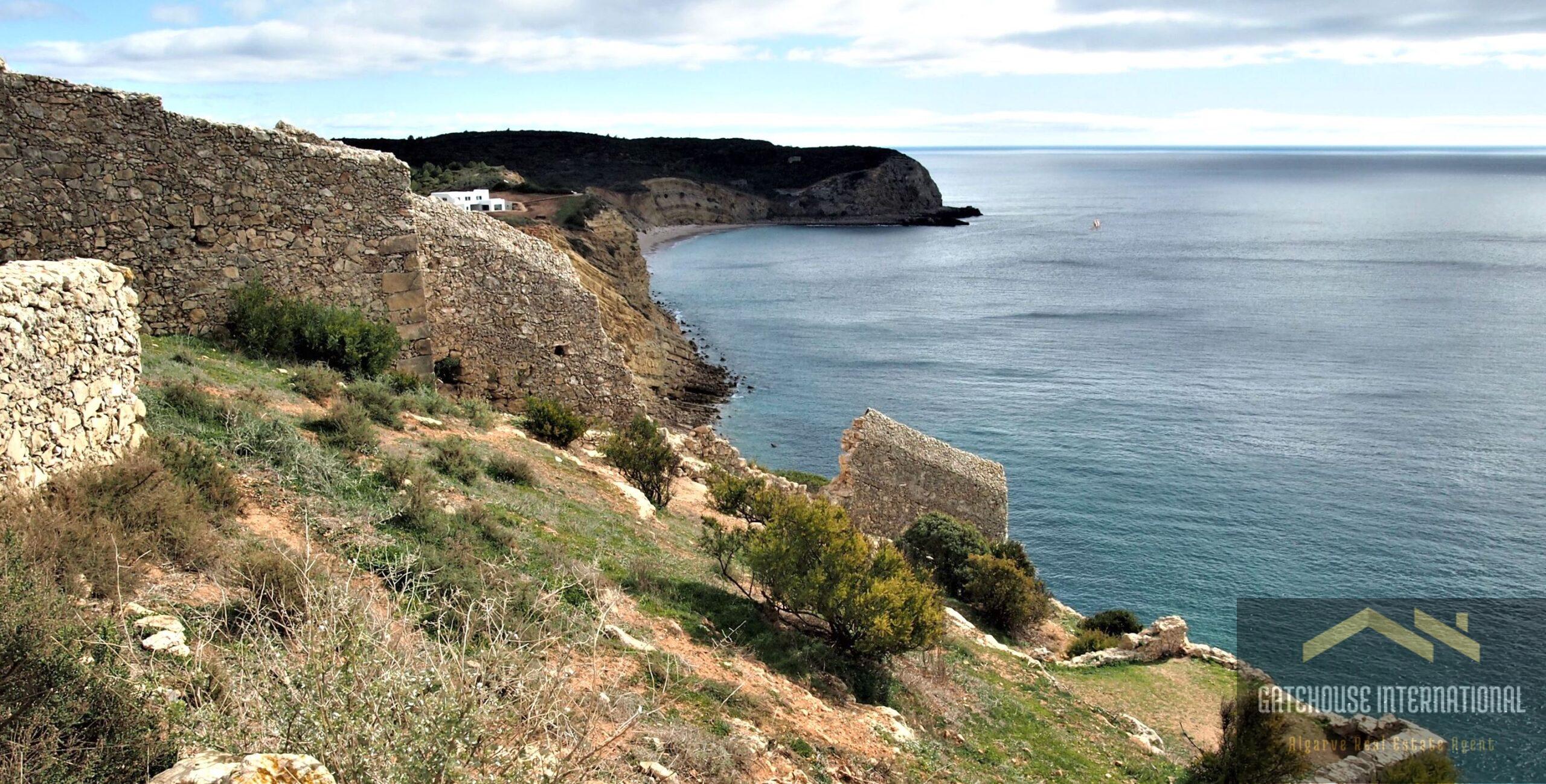
Fort of Santo António de Belixe
The Fort of Santo António de Belixe, which is also referred to as the Fortress of Beliche, is located near Cape St. Vincent in the parish of Sagres, municipality of Vila do Bispo in the Algarve.
The original date of construction is unknown but the fort was known to be in existence in the 16th Century.
Forte de Nossa Senhora da Encarnação
The Fort of Our Lady of the Incarnation is a small fortification in the parish of Carvoeiro and the municipality of Lagoa in the Algarve.
The Forte do Carvoeiro was originally named Fort of Nossa Senhora da Encarnação. Nowadays it is a military monument located just outside of the town of Carvoeiro.
Built-in the 1670s to protect the Algarve coastline, it was heavily damaged by the 1755 earthquake.
Fortress of Alcantarilha
The Castle of Alcantarilha was a medieval fortress in the parish of Alcantarilha in the municipality of Silves Algarve.
It is a little-known monument, now in ruins, used for the protection of the people of the village and surrounding area from attacks by North African pirates.
It was constructed circa 198 CE, and some of its walls were constructed in the 12th Century by Arabs, who had taken over the entire region of Alcantarilha.
It is now under the management of the Instituto Gestão do Patrimonio Arquitectónico e Arqueológico and is operated by the Municipal de Silves.

Mark McLoughlin: A Passionate Explorer of Algarve’s Rich Heritage
For over 20 years, Mark has called the Algarve home, immersing himself in its landscapes, culture, and history. His passion lies in sharing the region’s stories through writing, photography, and guides for those who live here or dream of making the Algarve their home.
As a Level 10 Google Local Guide, Mark has contributed extensively to showcasing the Algarve’s hidden beaches, historic towns, and local gems, helping both residents and visitors discover the best of this southern paradise.
🔗 mark-mcloughlin.com



